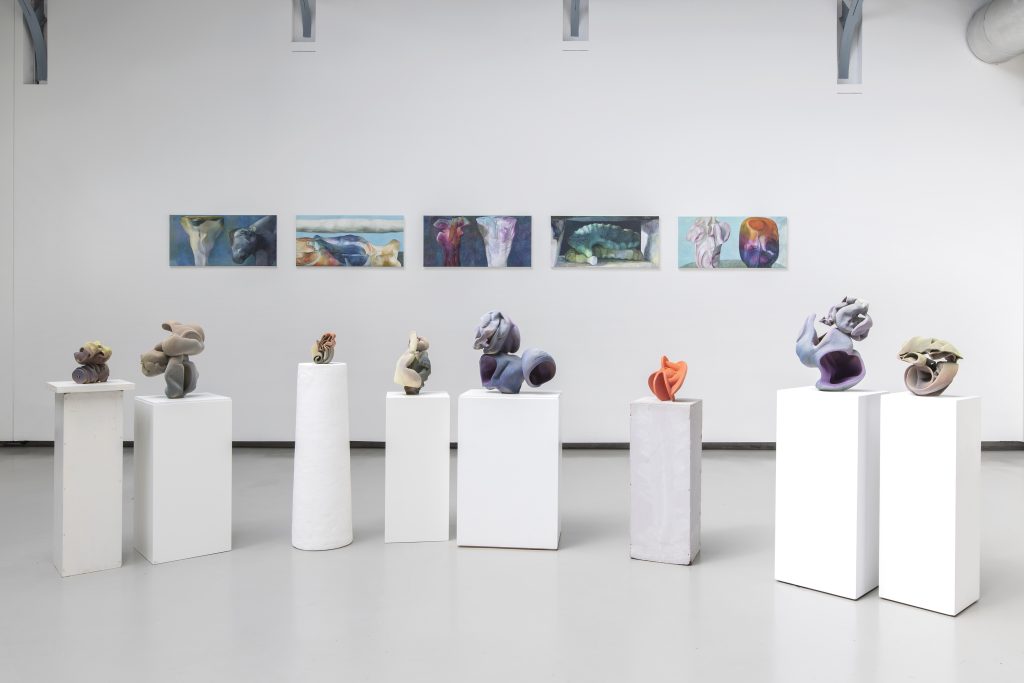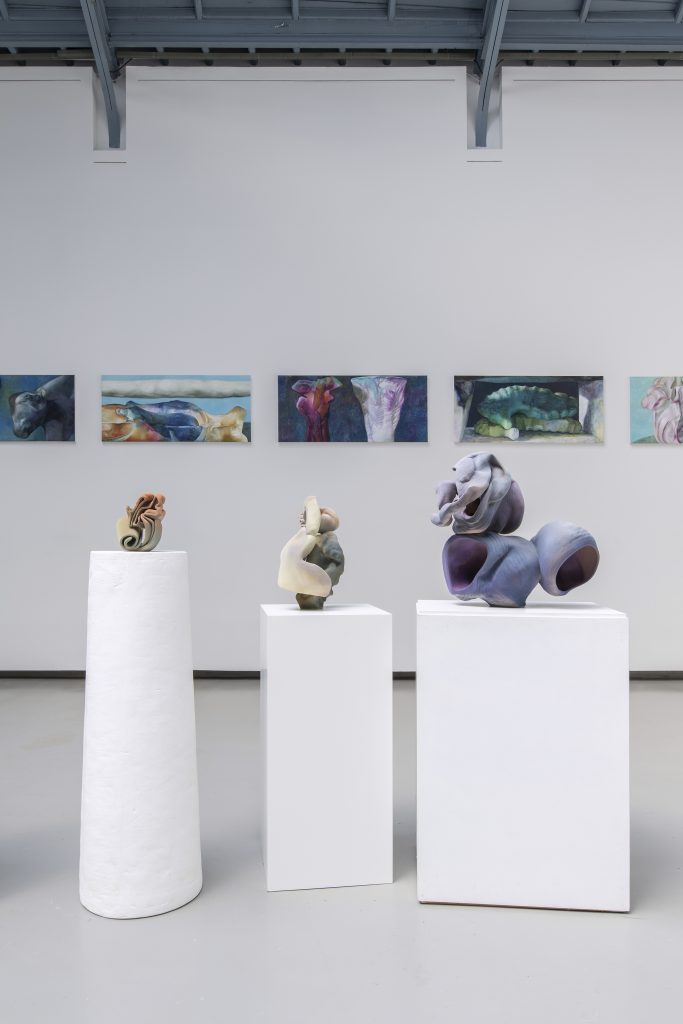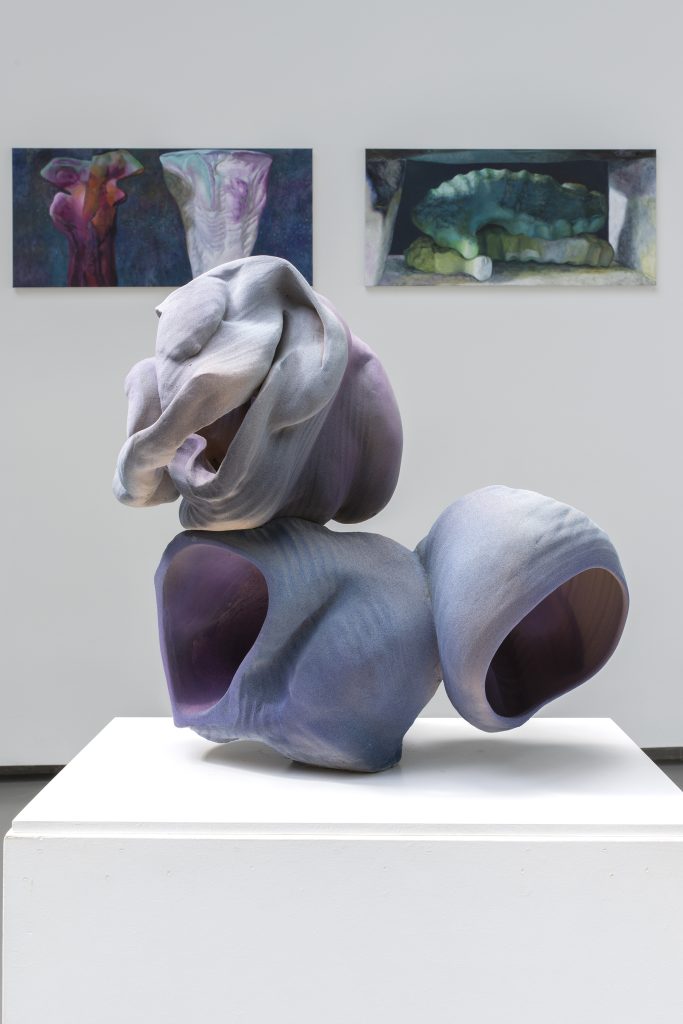The exhibition conceived by Joël Riff, “Bise”, invokes a meteorological metaphor to define the works of Anne Marie Laureys, its title an affectionate name for the North wind that blows across Europe. Shaking up the ancient practice of pottery, the artist, born in 1962 in Belgium, first deforms and then assembles clay thrown on a wheel, creating improbable shapes whose balance only the firing process can hold. Thus, her works take on complex forms, often turned upside down or inside out, rolled up or hollowed out, tapered, compressed or stretched. They defy the classical vocabularies of sculpture, while at the same time celebrating tactility through the visible imprint left by the artist’s hand on these indefinable volumes. “Bise”, the sculptor’s first solo exhibition in Brussels, celebrates the vitality of breath and the contact of surfaces, juxtaposing Anne Marie Laureys’ pieces – whose colors evoke atmospheric phenomena – with those of other artists. A sculpture by Auguste Rodin highlights the sensuality of forms in his and Laureys’s work. Painter Maude Maris and writer Amélie Lucas-Gary, who also took part in the previous exhibition at La Verrière, enter into further dialogues with the work of Anne Marie Laureys. This long-form approach to companion works, running over several exhibitions, underscores the exhibition space’s role as a place of convergence and encounter.The Bise exhibition celebrates contact and movement, the two founding principles of thrown clay. Fingers follow the substance as it is brought to life, guiding contours and raising volumes.
Anne Marie Laureys’ ceramics remain vessels. They contain her moods, preserving or pouring them out. On her wheel, she makes rain and good weather. Her aerial repertoire awakens a whole meteorological lexicon. Gusts and even cyclones make the supple panels twirl. In her studio, the artist controls the storms that create her clouds. And in the atmosphere, the bise traditionally refers to a northerly wind that sweeps across Europe through Belgium.
La Verrière in Brussels is a space where the Foundation d’ entreprise Hermès supports the visual arts through an exhibition programme like Bise is one. The Foundation closely accompanies every step of the creative process, partly from the production stages trough to their presentation to the public.
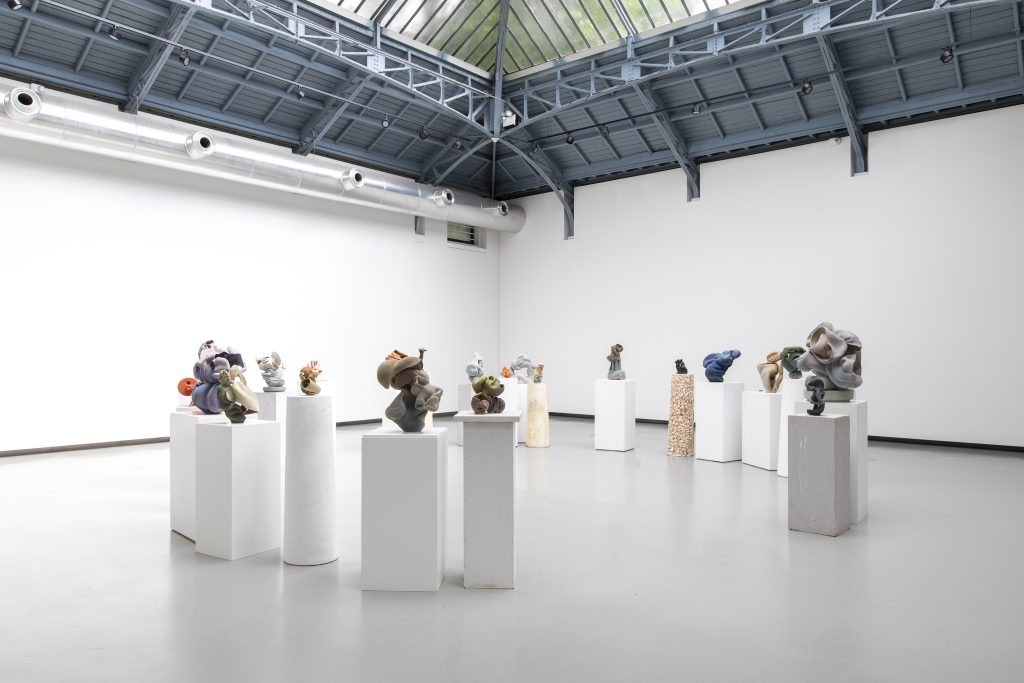
Bise, une exposition bruxelloise qui éveille la vigueur d’un souffle
Bise est la deuxième exposition de Joël Riff en tant que commissaire de La Verrière, à Bruxelles, l’évènement propose de donner une visibilité inédite à la céramiste belge Anne Marie Laureys tout en l’associant à trois autres personnalités : Maude Maris, Amélie Lucas-Gary et Auguste Rodin. Articulant oeuvres existantes, nouvelles productions et prêt exceptionnel d’un objet historique, l’accrochage affirme une dynamique sculpturale sous la bienveillance de la peinture.
La bise est un vent du Nord qui balaie l’Europe. Elle est froide et sa caresse peut sembler clinique. Elle apporte pourtant le beau temps. Elle nous touche, en une période où le contact n’est plus d’usage. Aussi, où que l’on soit, l’origine des choses relève d’un façonnage insufflé de vie par des gestes de démiurge. D’ailleurs ce mot en grec ancien signifie artisan. Le potier gonfle depuis toujours des poumons d’argile.
Anne Marie Laureys, depuis plus de quatre décennies, tourne la terre. Ses formes retiennent leur respiration. Et ici, une autre expire infiniment.
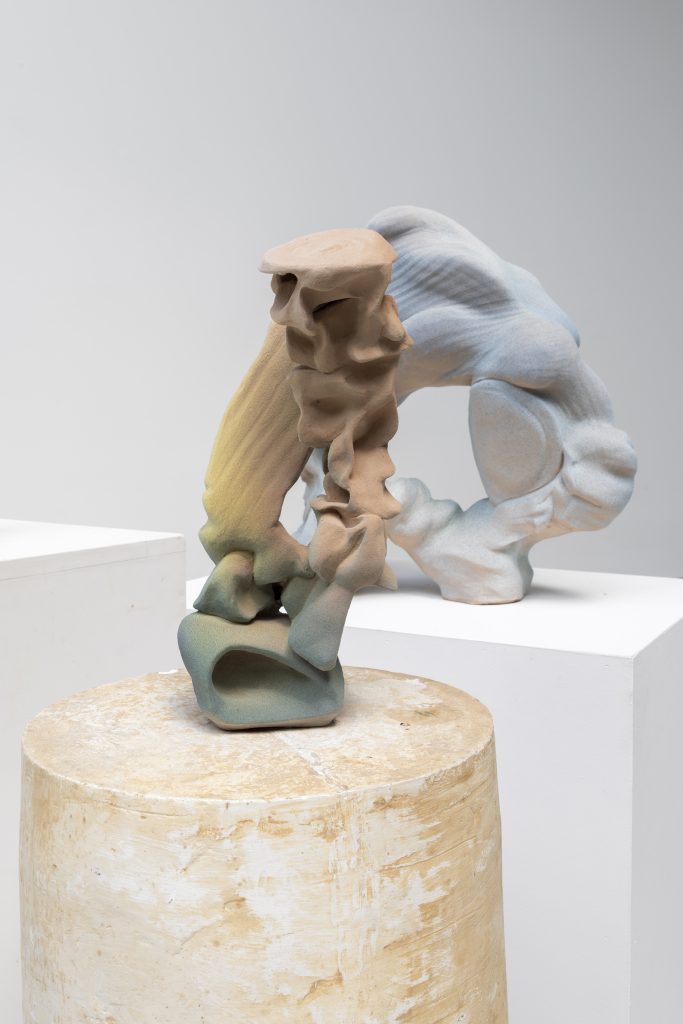
Anne Marie Laureys modèle des chairs sans figure. Elle fait naître d’un souffle ses créatures, entre ses paumes, à partir d’une motte bien centrée. Sur un axe, des volumes sont tournés puis déformés et assemblés. Ils sont monstres.
L’artiste bouscule la pratique ancestrale de la poterie, exploitant sa dextérité en la matière pour métamorphoser le gabarit d’une vaisselle bien faite en une lignée d’ectoplasmes. Pour cela elle éventre et dévisage avec pour objectif de soulever une harmonie alternative. C’est la cuisson qui permet de tenir d’improbables équilibres sans quoi la terre s’affaisserait. Des organes gonflés à l’épiderme tendrement poudré patientent, tenant la pose, dans leur envolée. Leur voltige s’immortalise. Ce façonnage implique une double rotation, différée, avec d’abord celle de l’argile sur sa girelle, puis celle du public autour de l’objet terminé. Ça s’appelle la révolution.
